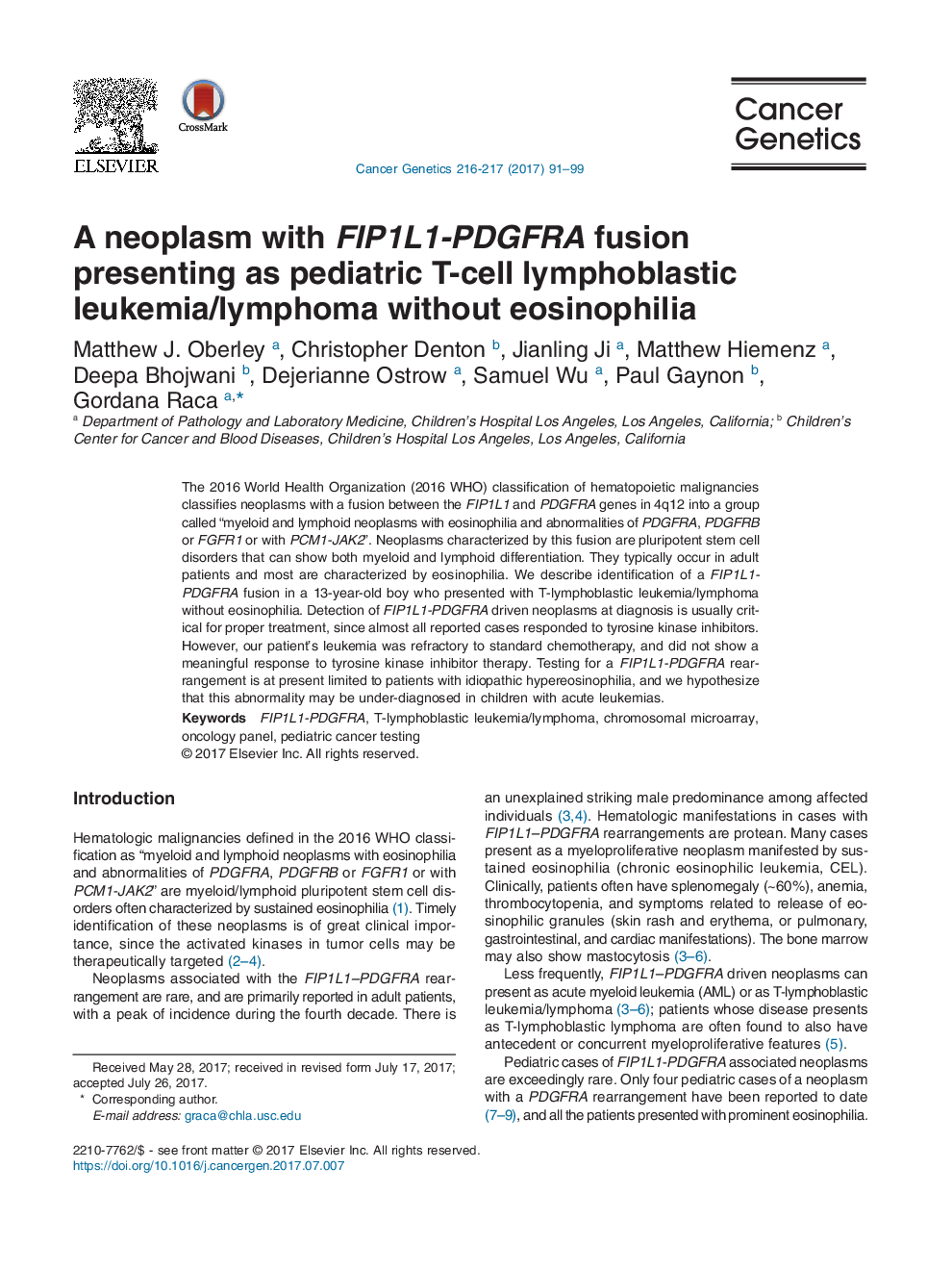| Article ID | Journal | Published Year | Pages | File Type |
|---|---|---|---|---|
| 5525033 | Cancer Genetics | 2017 | 9 Pages |
â¢We describe a FIP1L1-PDGFRA neoplasm presenting in a 13-year-old boy as a T-lymphoblastic leukemia/lymphoma without eosinophilia.â¢The unusual features of this case include young age of disease presentation and lack of eosinophilia or other clinical or morphologic features commonly seen in association with the FIP1L1-PDGFRA fusion.â¢We hypothesize that the FIP1L1-PDGFRA fusion may be under-diagnosed in both pediatric and adult patients with hematologic malignancies.â¢Detection of FIP1L1-PDGFRA driven neoplasms at diagnosis is critical for proper treatment, since almost all such cases respond to tyrosine kinase inhibitors.â¢This case illustrates the utility of comprehensive multi-modal genetic testing in pediatric acute leukemias.
The 2016 World Health Organization (2016 WHO) classification of hematopoietic malignancies classifies neoplasms with a fusion between the FIP1L1 and PDGFRA genes in 4q12 into a group called “myeloid and lymphoid neoplasms with eosinophilia and abnormalities of PDGFRA, PDGFRB or FGFR1 or with PCM1-JAK2”. Neoplasms characterized by this fusion are pluripotent stem cell disorders that can show both myeloid and lymphoid differentiation. They typically occur in adult patients and most are characterized by eosinophilia. We describe identification of a FIP1L1-PDGFRA fusion in a 13-year-old boy who presented with T-lymphoblastic leukemia/lymphoma without eosinophilia. Detection of FIP1L1-PDGFRA driven neoplasms at diagnosis is usually critical for proper treatment, since almost all reported cases responded to tyrosine kinase inhibitors. However, our patient's leukemia was refractory to standard chemotherapy, and did not show a meaningful response to tyrosine kinase inhibitor therapy. Testing for a FIP1L1-PDGFRA rearrangement is at present limited to patients with idiopathic hypereosinophilia, and we hypothesize that this abnormality may be under-diagnosed in children with acute leukemias.
